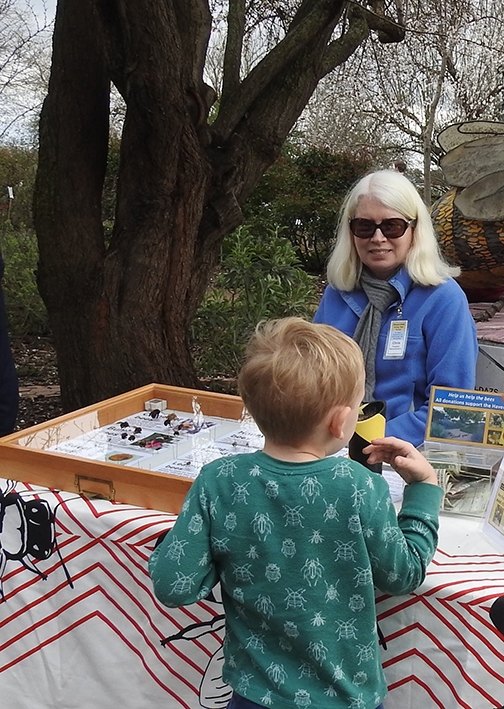
That's when the UC Davis Department of Entomology and Nematology will celebrate the 15th anniversary of its bee garden with an open house from 10 a.m. to noon. It's free and family friendly.
The half-acre garden is located next to the Harry H. Laidlaw Jr. Honey Research Facility on Bee Biology Road, west of the central campus.
The open house will include a tour of the garden at 11 a.m.; catch-and-release bee activity to observe bees up close; information about low-water plants; and presentations on University of California pollinator research.
Open from dawn to dusk (free admission), the Bee Haven is described as "a unique outdoor museum that provides resources for local bee pollinators, inspires and educates visitors to create pollinator habitat gardens, and provides a site for the observation and study of bees and the plants that support them."
Director of the garden is Elina Lastro Niño, associate professor of Cooperative Extension - Apiculture, UC Davis Department of Entomology and Nematology. Christine Casey is the manager, the academic program management officer.
The garden was installed in the fall of 2009, under the tenure of interim department chair Lynn Kimsey, now UC Davis distinguished professor emerita, and with primary funds from the Häagen-Dazs ice cream brand. Featuring a series of interconnected gardens with names like “Honeycomb Hideout,” “Nectar Nook” and “Pollinator Patch,” it was designed to provide the Laidlaw honey bees with a year-around food source, raise public awareness about the plight of honey bees, encourage visitors to plant bee-friendly gardens of their own, and serve as a research site.
“This garden is a living laboratory to educate, inspire and engage people of all ages in the serious work of helping to save honey bees,” said Dori Bailey, then director of Haagen-Dazs Consumer Communications.
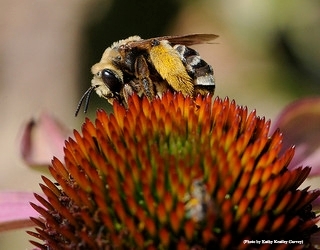
Art graces the garden, thanks to the UC Davis Art/Science Fusion Program, founded and directed by entomologist-artist Diane Ullman, UC Davis distinguished professor of entomology; and Davis-based artist Donna Billick. Billick, a self-described "rock artist," sculpted the six-foot-long worker bee that anchors the haven. Students and area residents crafted the bee-motif ceramic tiles that line a bench, which also includes the names of major donors.
A mural featuring native bees graces the shed in the garden. It was a project of the Entomology 1 class, "Art, Science and the World of Insects," taught by Ullman and Billick. Then doctoral student Sarah Dalrymple of the Rick Karban lab, served as the graphics project coordinator and teaching assistant, guiding the students on design, creation and installation of the panels. She went on to be named the 2011 recipient of the UC Davis Outstanding Graduate Student Teaching Award and praised for fusing the boundaries of biology, art and culture.
The Bee Haven came to "bee" after officials at the Haagen-Dazs read a research news story on honey bees, written by communication specialist Kathy Keatley Garvey and telephoned her. The article, on "building a better bee," chronicled the plight of honey bees and the work of bee breeder-geneticist Susan Cobey, then manager of the Harry H. Laidlaw Jr. Honey Bee Research Facility and now with Washington State University. Haagen-Dazs served as the primary donor of the garden and also funded the Häagen-Dazs Postdoctoral Fellowship at UC Davis. It went to Michelle Flenniken, an insect virus researcher based at UC San Francisco. She is now a professor at Montana State University.
Links:
Sausalito Team Wins Design Competition
//ucanr.edu/blogs/blogcore/postdetail.cfm?postnum=15240
Grand Opening Celebration of Honey Bee Garden
//ucanr.edu/blogs/blogcore/postdetail.cfm?postnum=15249
Eagle Scout Project: Fence Around the Bee Garden
//ucanr.edu/blogs/blogcore/postdetail.cfm?postnum=10166
Campus Buzzway: Wildflowers
//ucanr.edu/blogs/blogcore/postdetail.cfm?postnum=15242
Haagen-Dazs Honey Bee Haven: Sacramento Bee Award
(With photo of founding volunteers)
//ucanr.edu/blogs/blogcore/postdetail.cfm?postnum=10205
Shedding Light on Native Bees
https://ucanr.edu/blogs/blogcore/postdetail.cfm?postnum=27570
For more information on the UC Davis Bee Haven, access the website at https://beegarden.ucdavis.edu.
Attached Images:
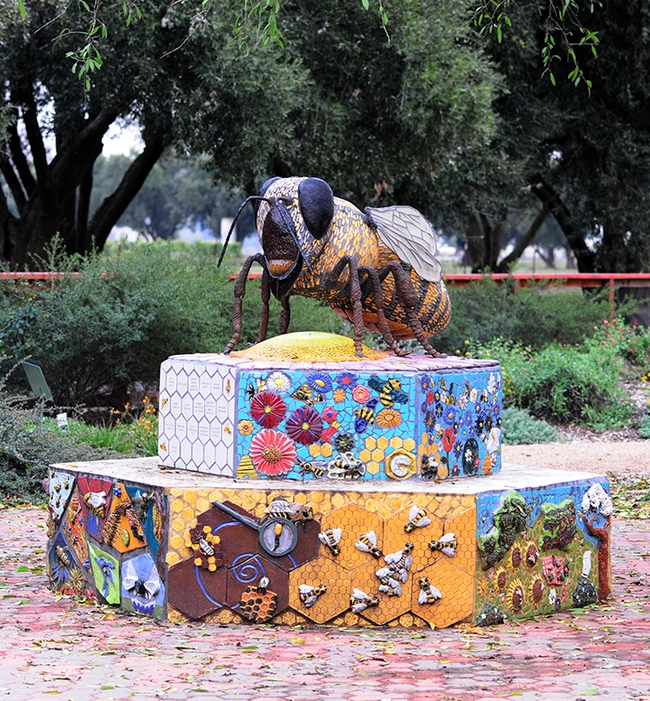
A ceramic-mosaic sculpture, "Miss Beehaven," anchors the UC Davis Bee Haven. It is the work of self-described "rock artist" Donna Billick of Davis. (Photo by Kathy Keatley Garvey)
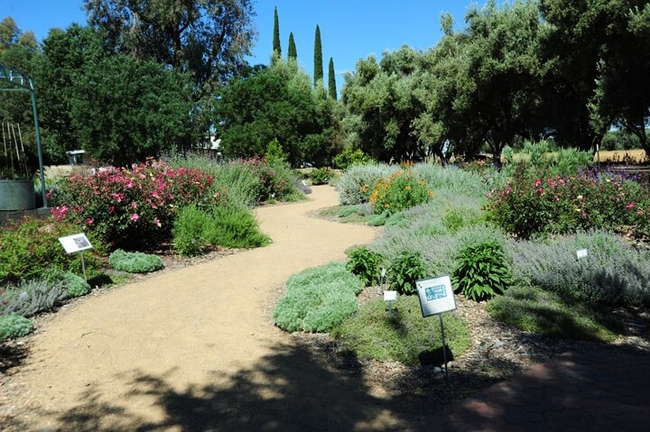
The early years of the UC Davis Bee Haven. This image was taken in May of 2012. (Photo by Kathy Keatley Garvey)
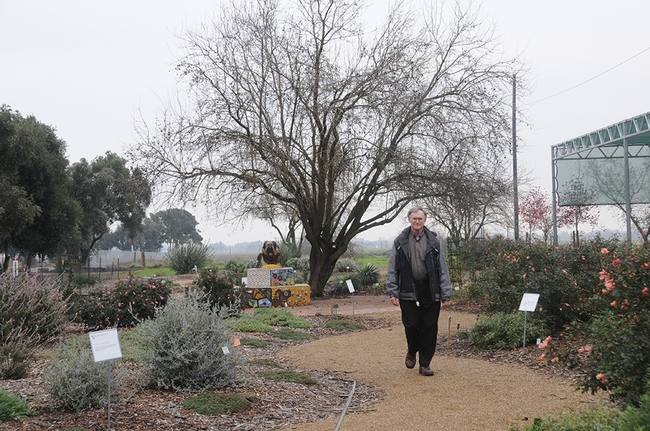
One of the "movers and shakers" of the founding of the UC Davis Bee Haven was the late Extension apiculturist emeritus Eric Mussen (1943-2022) of the UC Davis Department of Entomology and Nematology. This image was taken Jan. 13, 2011. (Photo by Kathy Keatley Garvey)
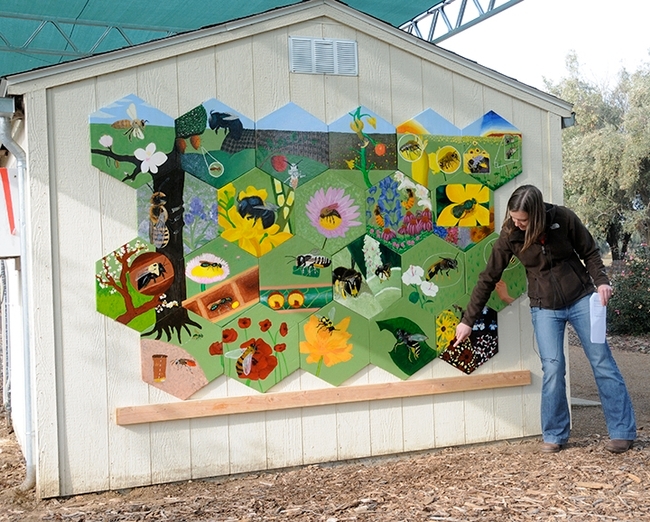
In 2011, then UC Davis doctoral student Sarah Dalrymple (pictured) coordinated the native bee mural at the UC Davis Bee Haven. The project was part of an entomology class taught by UC Davis distinguished professor Diane Ullman, artist and entomologist. (Photo by Kathy Keatley Garvey)